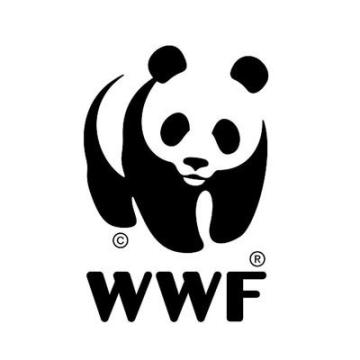
Water replenishment and treatment through Floating Treatment Wetland- A Nature-based Solution

For the project titled “Community Water Stewardship:Replenishing Groundwater Resources in Lahore”, one of the identified replenishment methods included treatment of wastewater through Floating Treatment Wetland (FTW). For its installation, Manak village was found to have large sewage wastewater and rain fed ponds along with musty odor creating nuisance and posing a significant health risk to the community.
FTW was created by using floating mats that provide foundation for plants to grow. The aligned mats float on the surface of the water and allow plants’ roots to spread throughout creating a vast activated surface area for microbes to live. These plants then uptake pollutants as nutrients from the inland water body. The microorganisms growing on the plant root systems break down and consume organic matter in the water through microbial decomposition, hence, effectively removing the pollutants from the water body.
Context
Challenges addressed
Some of the challenges addressed include; controlling the disposal of solid waste in the surrounding vicinity of the pond, maintenance of the mats after their installation, instructing and convincing the livestock owners to stop buffalos from entering the pond to prevent the mats from dislodging and timely harvesting of plants to prevent biodegradation.
Location
Process
Summary of the process
Each building block of the solution is interlinked. It starts with identifying the problem statement leading to assessment studies. During the assessment studies, all potential prerequisites are defined. Once the technical partners come on board, only then the assessment studies are endorsed facilitating in selecting the potential sites. After site selection, the community members of that site are taken on board for giving consents and highlighting the on-ground challenges of the demarcated site. Once the consents are on board, execution of the project takes place. It is only after the awareness and capacity building sessions that the community takes ownership of the intervention. After execution, the monitoring and analysis is conducted to check efficiency and sustainability of the solution.
Building Blocks
Engagement with Local Community Members
The basic purpose of engaging with the local community members was to identify the challenges faced by them and the feasible solution to overcome them. Moreover, this engagement facilitated in making the intervention/solution a local asset and encouraged community to take ownership of the solution. This is pivotal for the sustainability of the project and to create awareness among the community.
Enabling factors
For making this building block a success, it is important to take on board the community since the inception of the project. This helps in building local partnerships for giving a social uplift to the solution. Some of the conditions that play a significant role in enhancing the efficiency of this building block include;
1.Focus Group discussions with the community
2.Seeking consents from the community for installing the solution
3.Training and awareness sessions
4.Door- to- door Campaigns
5.Developing Community based Groups
Lesson learned
Some of the lessons learnt during the process of implementing this building block are enlisted below;
1. Community engagement in benefit sharing, transparency and awareness creation were vital for the success of this project.
2. It was with this engagement that the community's willingness to install a Floating Treatment Wetland for improving the condition of wastewater pond were inferred.
3. The community felt that there are local home grown solutions to be adopted for the wastewater treatment instead of high tech solutions.
Assessment Studies
The underpinning purpose of this building block is to create baseline for the entire solution. Once the site is selected for solution, primary and secondary data is collected through research and analysis. For instance, It is with the help of bathymetric data that the depth of the shortlisted ponds is identified, which further facilitates in choosing the right pond with the required depth (0.8 - 3 meters) for installing floating treatment wetland.
Enabling factors
Some of the important conditions required for enabling the success of this building block include as follows;
1. Accessing credible research sources
2. Liaison with credible technical experts
Lesson learned
1. Selection of the right pond
2. Successful installation of FTW while considering all prerequisites suggested by literature reviews
3. Comparative analysis of wastewater quality both pre and post installation of FTW that indicated improvement in water quality
4. Choosing the right plant species
Two main suggestions include
1.Choosing the right design for aligning the floating mats to avoid entanglement of buffalos and
2. Choosing the right raw material of mats to avoid their dislodging in case of storms.
Impacts
The direct beneficiaries of this solution include the fisherman, dairy farmers and the farming community in and around the vicinity of Manak Village Lahore. Some other positive impacts include; removal of pollutants and excess nutrients from village ponds, provision of habitat for migratory, resident bird species and freshwater turtles (Indian Flapshell Turtle), improvement in fish yield at Fish Pond 1, reduction in amounts of BOD, Nitrates and Phosphates and improvement in the amount of DO, improved aesthetics by minimizing odour, provision of riparian edge to birds (Cattle Egret and Grey Heron), improved and enhanced water quality seeping into the aquifer.
Beneficiaries
Farming Community (improved quality of wastewater)
Fisherman (considering there is a fish pond next to the wastewater pond)
Residents of Manak Village (minimized odour and reducing spread of waterborne diseases)
Sustainable Development Goals
Story

During the post-installation survey, a local fisherman at Manak Village, who has been rearing fish in the village wetlands, was clearly beaming in response to questions asked about the installation of Floating Treatment Wetland (FTW). When inquired, he replied that just a few months ago he was worried about the low fish yield impacting his livelihood. However, it was after the installation of this FTW that led to an increase in the fish yield while impacting his income positively. It is now that he feels motivated and hopeful for a better future.


